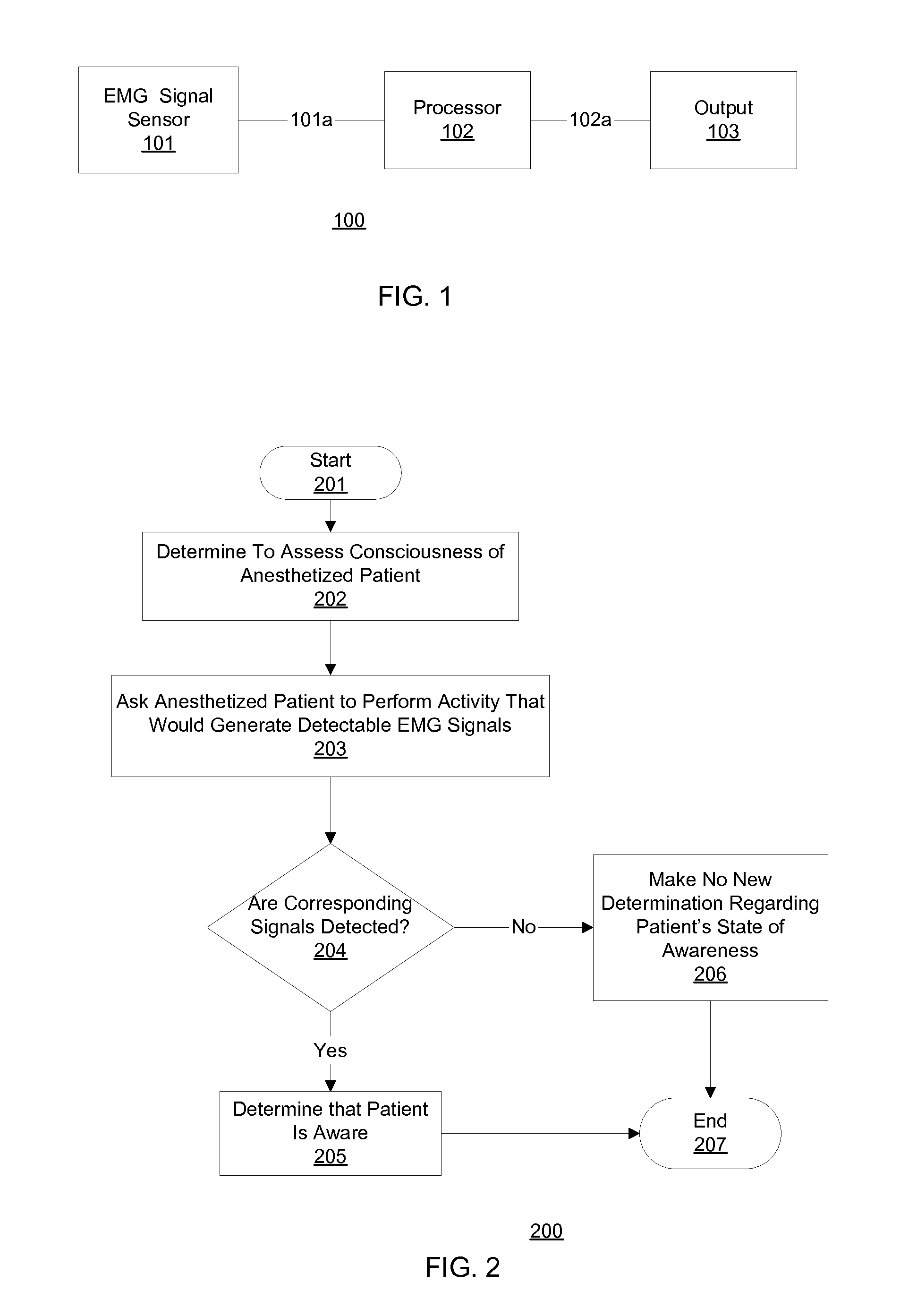Communication with and consciousness-assessment of anesthetized surgery patients
a technology for anesthesia and surgery patients, applied in the field of communication with and consciousness assessment of anesthesia surgery patients, can solve the problems of high undesirable effects of under- or over-dosage of anesthesia, potentially expensive anesthesia, and inability to achieve the desired anesthesia
- Summary
- Abstract
- Description
- Claims
- Application Information
AI Technical Summary
Benefits of technology
Problems solved by technology
Method used
Image
Examples
Embodiment Construction
[0018]One of the more potentially traumatizing aspects of anesthesia awareness, aside from the unexpected and disturbing startling awareness of undergoing surgery, is the patient's unexpected inability to communicate with members of the surgical team operating on the patient. Providing systems and methods to allow an anesthetized, but aware patient to communicate with the surgical team may significantly reduce the trauma of such an event. Communicating with the surgical team by, for example, answering questions through manipulation of his or her own mental state in ways that are neurologically detectable, allows an anesthetized, but aware patient to thereby demonstrate awareness and also provide meaningful information to the surgical team.
[0019]During surgery, surface electrodes are typically placed on the patient's forehead in order to detect brain waves in the form of EEG signals. These electrodes also typically pick up muscular activity underneath the electrodes, detected in the ...
PUM
 Login to View More
Login to View More Abstract
Description
Claims
Application Information
 Login to View More
Login to View More - R&D
- Intellectual Property
- Life Sciences
- Materials
- Tech Scout
- Unparalleled Data Quality
- Higher Quality Content
- 60% Fewer Hallucinations
Browse by: Latest US Patents, China's latest patents, Technical Efficacy Thesaurus, Application Domain, Technology Topic, Popular Technical Reports.
© 2025 PatSnap. All rights reserved.Legal|Privacy policy|Modern Slavery Act Transparency Statement|Sitemap|About US| Contact US: help@patsnap.com


